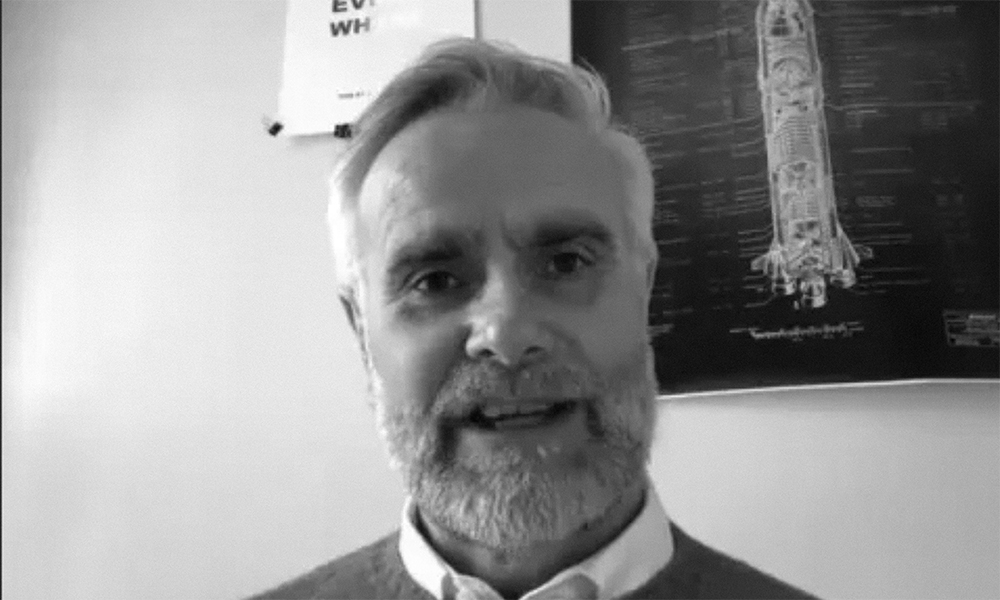 Photograph: Victor Garcia/Unsplash
Photograph: Victor Garcia/Unsplash
The term innovation has haunted my career for more than a decade. I have come to a definition, which thinks of the different manifestations of innovation as parts of speech: a noun, a verb and an adjective. In my experience, some of the confusion this word generates is derived from not paying attention to which of these three variants of the word is in use because they’re often (wrongly) conflated.
Innovation as speech (nouns, verbs and adjectives)
Innovation can be used to describe things. When Elon Musk is standing on a stage pointing at some cool object behind him, singing its praises, this is the noun use of the word ‘innovation’. The innovation is literally the thing on the stage. In a corporate context, we see this rear its head in the call for a ‘pipeline of innovations’ or similar. Anywhere you see the word pluralised, it’s a strong clue that you’re seeing someone use it as a noun. This is a valid sense for the word ‘innovation’, but overall is usually the least sensible or useful way to think about it.
Innovation can be used as a word to describe processes or techniques – ways of doing things. This is its use as a verb. When you encounter a consultant, eager to show you heretofore secret ways to ‘innovate’, you encounter the word in this form. To innovate is the verb form of the word. This is a useful way to think about the concept; if the noun form of innovation is the ‘what’, then the verb form is the ‘how’.
Finally, when we start to talk about the things that make one object, process, or group of people an innovation, we encounter the concept of it as an adjective. This is the word in the form of ‘innovative’, as in ‘that object is more innovative than this one’. When applied to a group of people, we encounter the fact that some ways of organising and behaving – a group’s culture – seem to be more strongly correlated with ‘innovative’ outcomes than others. To me, this is the most important of the three variants, because lurking subtly within it we also encounter, for the first time, the ‘why’ of things.
Innovation as a means to an end
The ‘why’ of innovation is the critical aspect about which we, as corporate leaders, should be thinking. The trap lurking within thinking about innovation as a noun or a verb is thinking about them as ends. This is never the case: innovation is a means to achieving some business objective, and it is this objective that we must always understand and be seeking. Why are we doing this? Why are we not doing that instead? Unless these questions can be confidently answered by everyone on a team working on an ‘innovation’, there is a clear danger that they’re wasting their time.
Make hypotheses, test them
So how do we avoid that danger? How can we ensure that people can confidently answer the ‘why’ question? Let me return to the ‘innovation as a verb’ variant for a moment – to the ‘how’ of being innovative.
The same simple set of concepts lurk at the core of the many different solutions available to you to ‘do innovation’. Make a statement about something as a hypothesis. Design one or more tests. Run those tests. Validate or invalidate the hypothesis. Repeat.
This core approach, also otherwise known as the scientific method, is the beating heart of every lean, agile, or DevOps-ian process or methodology. The key to using it innovatively is learning how to move through its stages as quickly and cheaply as possible. This is what every Minimum Viable Something-or-Other Concept is trying to get you to understand. It sounds simple, but it’s not.
What countless analyses have shown over decades is that individuals and teams that master the concepts and skills needed to draft good hypotheses, to design good tests, and to analyse and interpret results accurately, are the ones that are most strongly associated with outcomes that are ‘innovative’. Indeed, my strong belief is that this is what innovation is about: the skills and techniques needed to make and test hypotheses successfully and then execute on the results.
Research, then develop
How do we formulate our hypotheses so that they have the best odds of being testable? How do we design our tests to avoid false positives or negatives and understand how confident we can be in the results?
The answers to these questions blend skills in areas as diverse as research design, statistics, data science and others. Being confident in these answers is the key to also being confident in the ‘why’ question I mentioned earlier, the business objective. Once these skills are available to an organisation, it can use them in all facets of its work.
My strong belief is that this is what innovation is about: the skills and techniques needed to make and test hypotheses successfully and then execute on the results.
Critically, moving from a great idea to a market-ready deliverable value proposition can be accomplished simply by applying these skills and techniques appropriately. For example, how do we know that a given go-to-market plan is the best one? Or that the pricing model we’ve chosen is right for our target customer? In each of these cases: design a test, validate the hypothesis.
Rather than focus on ‘innovation’ as a concept on its own, let’s focus on this research and development work. Where teams and organisations have invested in building out these core competencies and learned how to leverage them across all aspects of the business, my experience is that we will find innovation is the successful result. And therefore, my advice is simple – don’t ‘do’ innovation. That’s a logical fallacy, a kind of trap. Instead, focus on being good at research and development. Do R&D.

















































